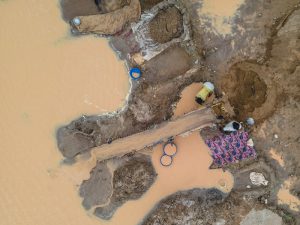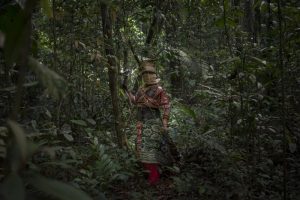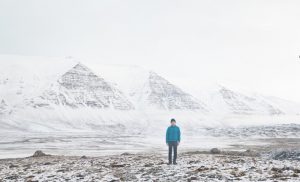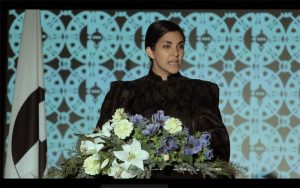On the 30th of June 2010, the Democratic Republic of Congo will celebrate the 50th anniversary of its independence from Belgium. Belgian photographer Carl de Keyzer decided to travel through the country following the “Guide Du Voyageur du Congo Belge”. Published in 1954, the touristic guide presented Congo as the ideal holiday destination with brand new infrastructure and stunning scenery. The guide described the cities and villages of Congo along with their respective landmarks, most of them built by the colonizers: churches, swimming pools for white people only, amusement parks for white people only, missions, factories, harbors, mines, prisons, etc. These places have now lost much of their former luster and glory, the country after all has been torn apart by years of civil war and revolts. The buildings and other infrastructures are either ruins or used for identical or different purposes.
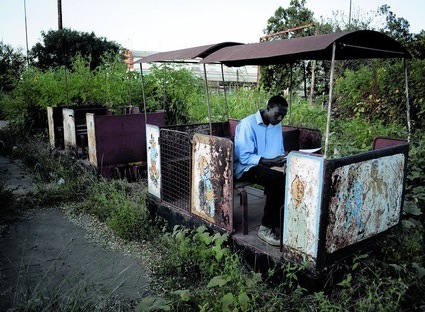 Carl De Keyzer, UMHK (Union minière du Haut Katanga), centre récréatif, Kolwezi 2009
Carl De Keyzer, UMHK (Union minière du Haut Katanga), centre récréatif, Kolwezi 2009
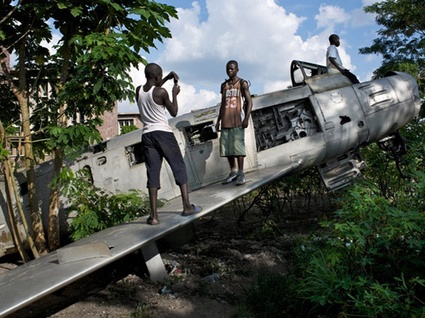 © Carl de Keyzer / Magnum Photos, Congo (Belge)
© Carl de Keyzer / Magnum Photos, Congo (Belge)
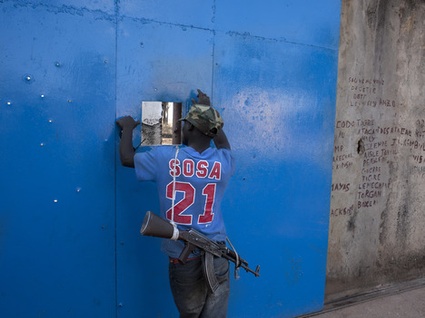 © Carl de Keyzer / Magnum Photos, Congo (Belge)
© Carl de Keyzer / Magnum Photos, Congo (Belge)
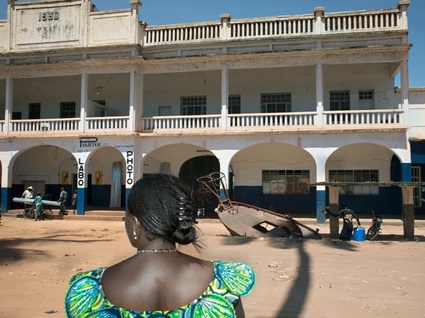 © Carl de Keyzer / Magnum Photos, Congo (Belge)
© Carl de Keyzer / Magnum Photos, Congo (Belge)
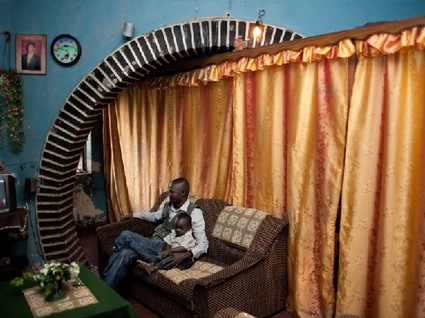 © Carl de Keyzer / Magnum Photos, Congo (Belge)
© Carl de Keyzer / Magnum Photos, Congo (Belge)
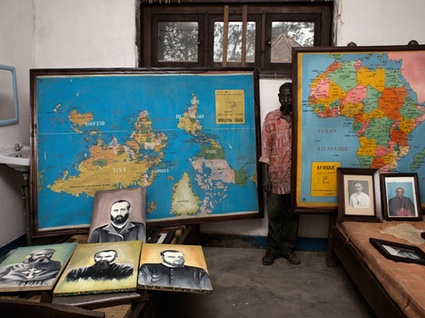 © Carl de Keyzer / Magnum Photos, Congo (Belge)
© Carl de Keyzer / Magnum Photos, Congo (Belge)
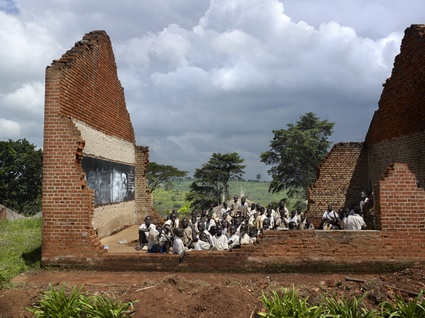 © Carl de Keyzer / Magnum Photos, Congo (Belge)
© Carl de Keyzer / Magnum Photos, Congo (Belge)
In 1885, King Leopold II maneuvered to make the Central African country – almost 80 times the size of Belgium – into his personal property and renamed it the “Congo Free State.” Rubber was discovered, diamonds and precious materials as well. King Leo got super rich, people in Congo became slaves. The international outcry raised by the shameful pillage of the country and shocking human rights abuses led to a campaign to examine Leopold’s regime. It was the first mass human rights movement. In 1908, the Belgian parliament compelled the King to ceder his private colony to Belgium. The gesture, along with the wonderful buildings the King built in Belgium led to a “Great Forgetting” of the atrocities committed in the Congo Free State.
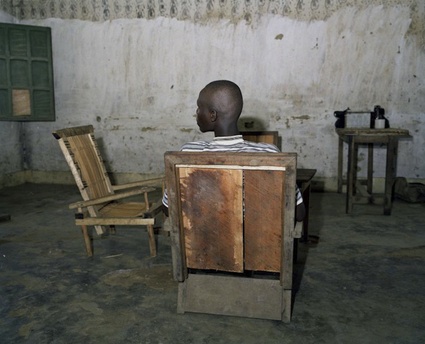 © Carl de Keyzer / Magnum Photos, Congo (Belge), Buende, Congo, August 2003
© Carl de Keyzer / Magnum Photos, Congo (Belge), Buende, Congo, August 2003
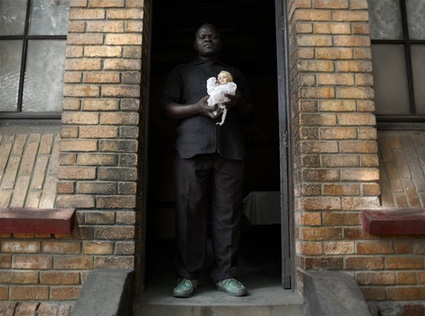 Carl de Keyzer, St.-François de Sales Church, Kinshasa, 2007. © magnum photos
Carl de Keyzer, St.-François de Sales Church, Kinshasa, 2007. © magnum photos
De Keyzer’s images do not dwell on the glorification of what once was. He was surprised to see how much Belgians, instead of trying to adapt the new infrastructures to the country, were trying to replicated a little Belgium in the heart of Africa. Belgium is portrayed as much as the Congo in this photo series.
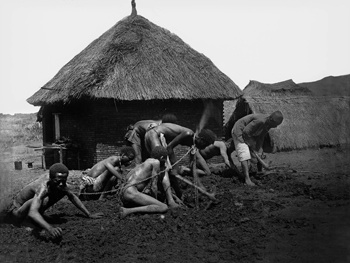 Prisoners demolishing a termite mount
Prisoners demolishing a termite mount
There is no nostalgia, no “that country was better when we ruled it.” An exhibition, co-curated by De Keyzer and Johan Lagae, at the other side of the museum floor, brings a stark light on the big taboo that Belgian Congo was/is in Belgium (it’s only when i went to study in England that i learned about the atrocities my country perpetrated in Congo.) Its title Congo belge (en images) refers to a book published in 1911 that presented the colonizing epic in a flattering light. De Keyzer and Lagae selected hundreds of pictures from the archives of the Royal Museum for Central Africa in Tervuren. The images bring a very disturbing light on Belgium’s dreams and utopia, on the omnipotence of the white man, on the way religion was used as an excuse to turn people into slaves.
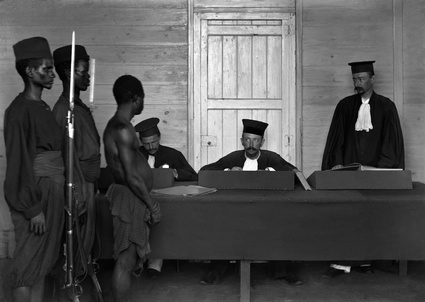
I wish i could have given full credit to each picture but most of the photos i found online had none.
There’s a great photo gallery on Magnum and ICRC has an interview with the photographer.
De Redactie has two interesting videos (in dutch), the first is an interview with De Keyzer. The second sees the photographer giving a tour of the show to an old missionary. More pictures at De Standaard.be.
Congo (belge) and Congo Belge en images are on view at the FotoMuseum in Antwerp until May 16, 2010.
Related: Guy Tillim: Avenue Patrice Lumumba, Persona. Ritual masks and contemporary art, Manifesta 7: Tantalum Memorial – Residue.

